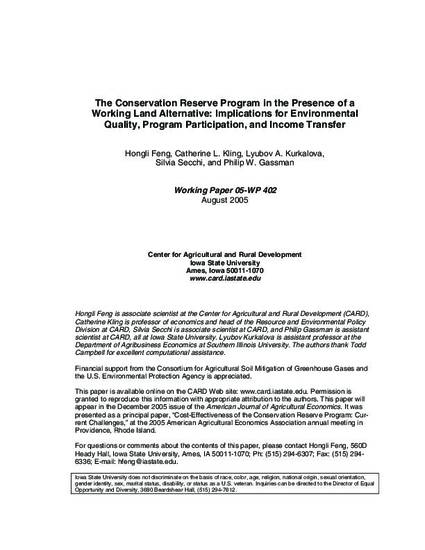
Article
The Conservation Reserve Program in the Presence of a Working Land Alternative: Implications for Environmental Quality, Program Participation, and Income Transfer
American Journal of Agricultural Economics
Document Type
Article
Publication Version
Submitted Manuscript
Publication Date
1-1-2005
DOI
10.1111/j.1467-8276.2005.00812.x
Abstract
The United States has invested large sums of resources in conservation programs for agriculture over the past century. Beginning in 1985, the largest and most ambitious conservation program, the Conservation Reserve Program (CRP), was introduced with the dual goals of controlling supply and reducing soil erosion. As reported in Claassen et al. over $15 billion was spent in the first fifteen years and resulted in the retirement of about 10% of the total cropland across the country from active production.
Citation Information
Hongli Feng, Catherine Kling, Lyubov A. Kurkalova, Sylvia Secchi, et al.. "The Conservation Reserve Program in the Presence of a Working Land Alternative: Implications for Environmental Quality, Program Participation, and Income Transfer" American Journal of Agricultural Economics Vol. 87 Iss. 5 (2005) p. 1231 - 1238 Available at: http://works.bepress.com/catherine_kling/89/

This is a working paper of an article from American Journal of Agricultural Economics 87 (2005): 1231, doi:10.1111/j.1467-8276.2005.00812.x